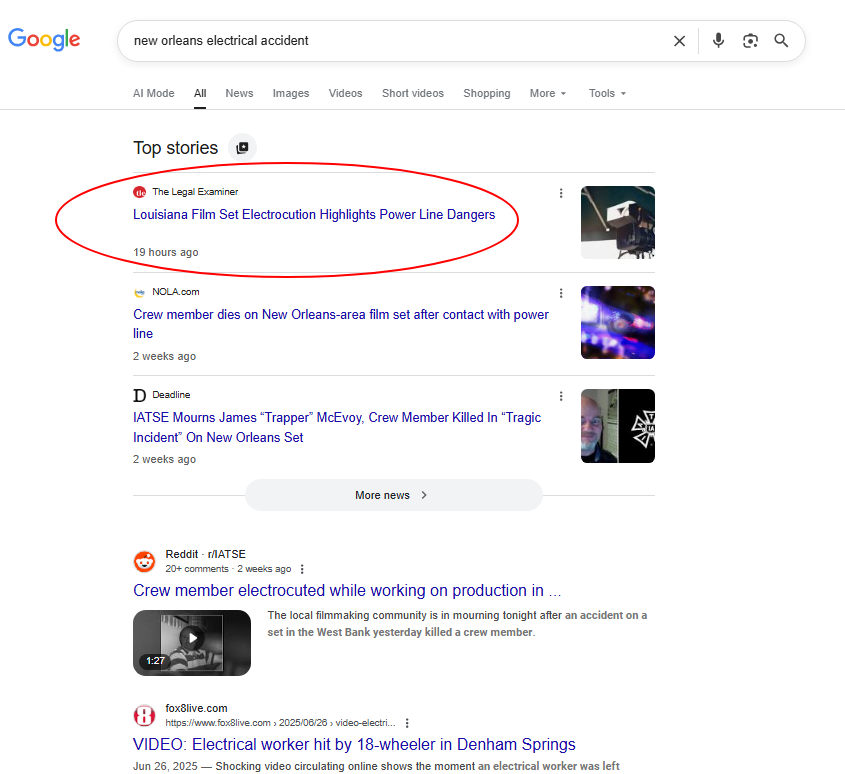Introduction
A lot of firms still assume search engines work the same way they did years ago. They imagine Google crawling a few blog posts, matching some keywords, and hoping the firm’s SEO agency keeps the site from slipping. That world is gone. The current search environment, including AI powered search, relies heavily on entities and third party context to understand who you are, what you do, and whether you are credible enough to appear in AI Overviews, carousels, and organic results.
Your firm website alone cannot supply all of that context. This is the mistake most agencies continue to make.
Here is a real example of how this works in practice.
How Third Party Publishing Changes Your Visibility
A Legal Examiner article published by the Louisiana plaintiffs firm Herman, Katz, Gisleson & Cain appeared in the Top Stories carousel for several Google queries related to a severe electrical accident and rescue.

That placement is helpful, but the visibility itself is not the important part. The real value is the set of signals that the TLE article sends to Google about the firm. When Google sees a clear piece of third party reporting on a trusted domain, it learns more about the firm’s relevance to the topic, the location, and the legal issues involved. Those signals flow back to the firm’s own primary site and strengthen how Google understands the firm in the broader knowledge graph. A standalone site cannot create that same level of reinforcement on its own.
The effect becomes even clearer in the next example.
How Entities Influence What Shows Up in AI Overviews
When the query shifts to one about an electrical injury attorney, the results change significantly. The firm begins to appear inside AI Overviews, in the right side article carousel, inside the generative summary, and in traditional organic search results.

This is not accidental. The firm is appearing across every surface because the topic is clear, the third party coverage is trusted, and the entity connections are unambiguous. Google does not need to guess. It has evidence that the firm belongs inside the conversation. The article, the geography, and the legal context all reinforce each other.
This produces visibility that a firm website cannot achieve on its own. In the current search landscape, that combination of trusted context and clear entity signals is what determines reach.
Why This Matters for Law Firms
This is the shift most firms never see.
Publishing only on your own site creates a minimal footprint. It does not establish the kind of broader authority or clarity that Google and AI systems need in order to understand your relevance. You have to appear in the wider ecosystem where legal information is evaluated, cited, and connected. That is how Google and AI systems confirm who you are and what you do.
A trusted third party publication provides the reinforcement your firm site cannot supply. When that coverage is clearly written, accurately linked, and tied to your practice and geography, the difference in both traditional search and AI driven results becomes dramatic.
Visibility today is not about publishing more content. It is about creating the right context and surrounding your firm with signals that search systems can understand and reuse.
How to Apply This to Your Firm
If you want search engines to understand your firm and its work, The Legal Examiner gives you a path to do that. Contributor Accounts ensure your content is published inside a trusted legal publishing environment. Your articles are distributed across news and legal content networks. Your work becomes visible to the systems that interpret credibility and build the knowledge graph that powers AI Overviews and modern search.
If you want help applying this to your own firm, feel free to reach out anytime at
nick@legalexaminer.com or visit https://www.legalexaminer.com/contribute to get started.












